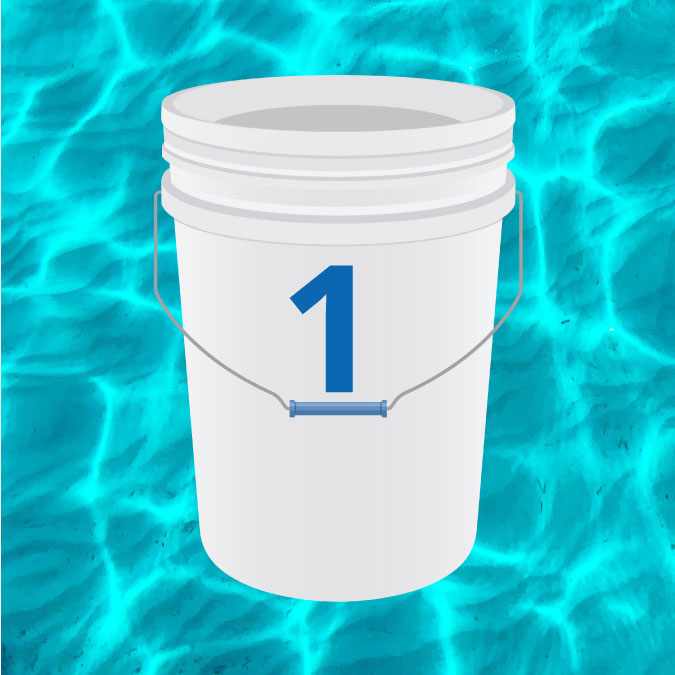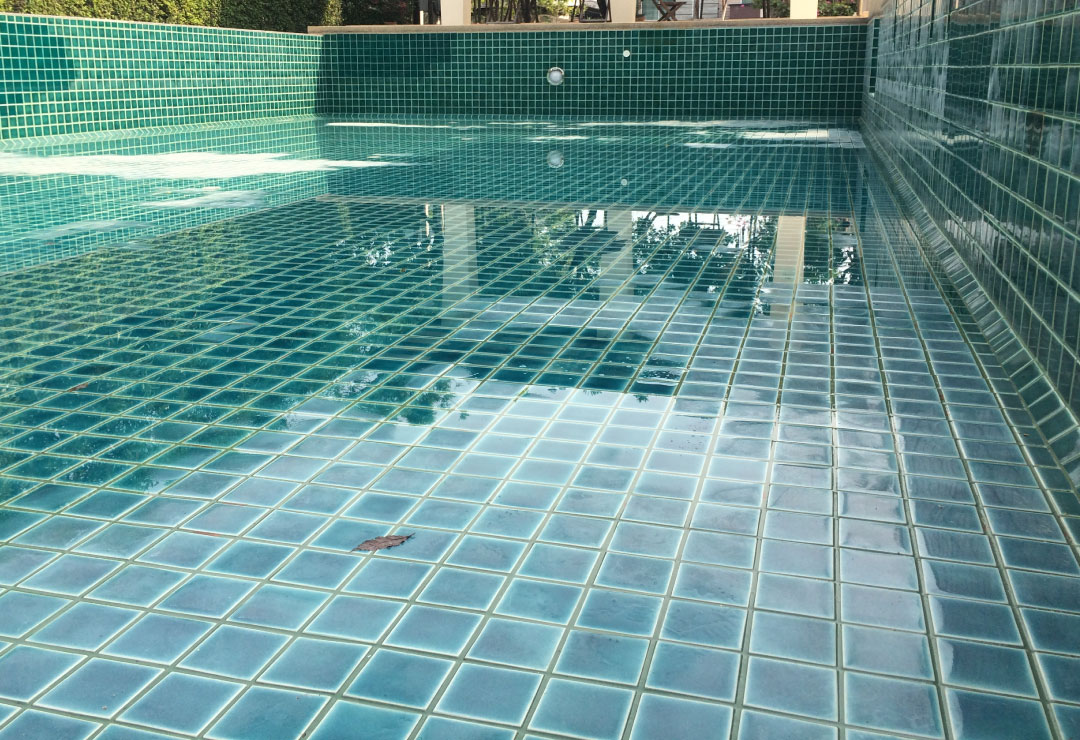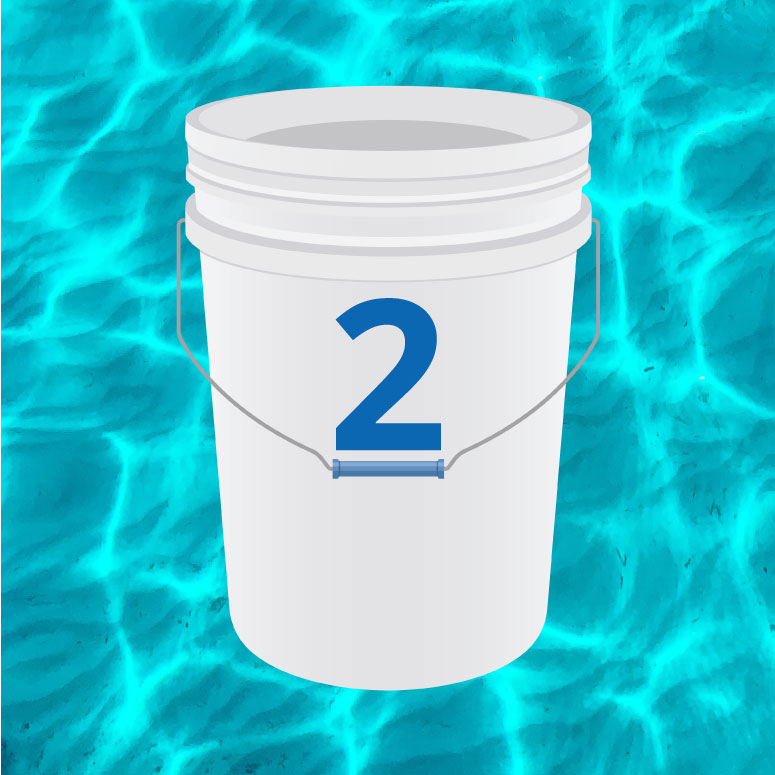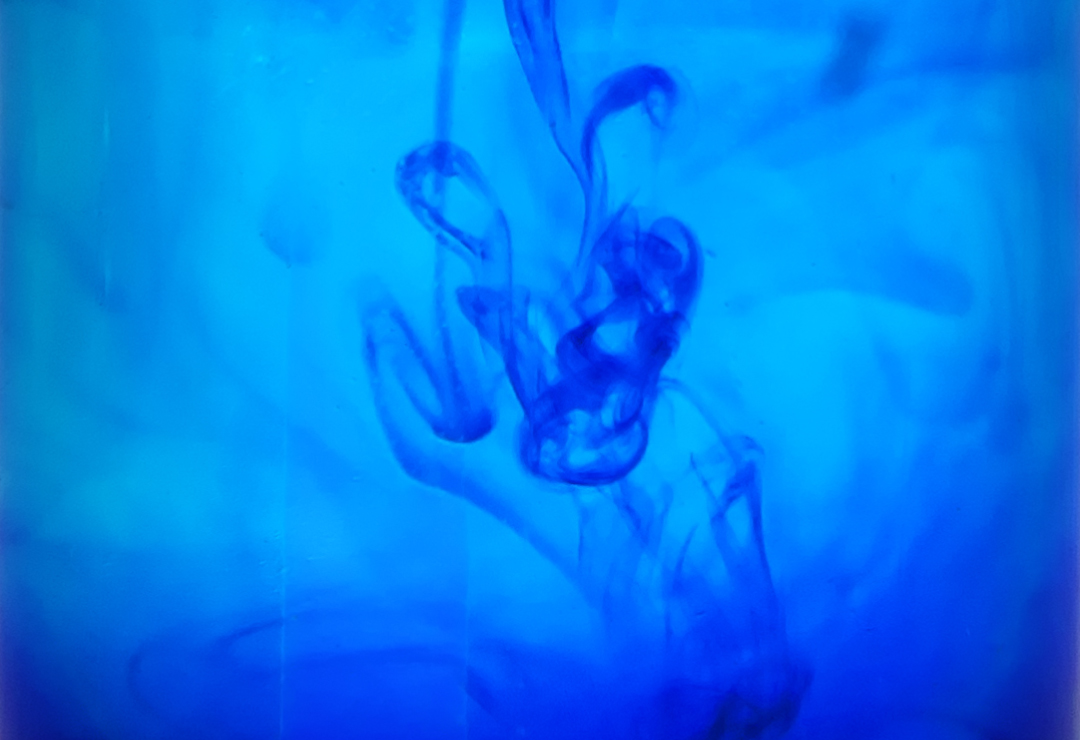How can I find a leak in my pool?

If the water level in your pool always seems kind of low even though you keep refilling it, your pool might be leaking water. A leaking pool is costly, you’ll want to get it fixed right away.
Help! Is my pool leaking?
Is pool water loss always caused by a leak? Not necessarily!
A little bit of water loss is normal. Outdoor pools tend to lose around 1/4 inch of water per day due to evaporation alone. This number will vary slightly due to humidity, sunlight, barometric pressure, wind, and pool usage, but a bit of evaporation will always happen.
However, a leak will cause more water loss than evaporation. Leaks in your pool system are costly and should be fixed as soon as possible.
Here are some other symptoms of a leaking pool:
- Needing to add more water than usual
- Cracks or gaps in the concrete vessel
- Displaced or loose tiles
- Mushy spots or standing water around the pool
- A significantly increased water or electric bill
- Frequently unbalanced water or increased algae growth
- Rapid loss of CYA
So how can you tell if your pool is losing water due to a leak? There’s a simple test you can try, and all you’ll need is a bucket.

The Bucket Test Part 1 — Is there a leak in my pool?
- Place a bucket on the second step of the pool. Fill a 5-gallon bucket with pool water to the exact level of the surrounding pool water. The bucket should be at least ¾ full, but preferably as full as possible.
- Mark the water level both inside and outside the bucket using a permanent marker.
- Keep the circulation system on, and wait 24 hours.
- After 24 hours have passed, compare the two water levels. If the pool water (outside mark) goes down more than the bucket’s water level, there is probably a leak. If the levels are the same, your pool is not leaking; only evaporation has occurred.
For the Bucket Test to be successful, make sure that the pool is closed for the duration of this experiment; this test needs to be done in a controlled environment where animals and humans will not be able to interfere. Unfortunately, if it rains during the test, you will need to repeat the test!
If the bucket test reveals that your pool has a leak, the next step will be to figure out what is causing the leak.
What’s causing my pool to leak?
There are four main areas that leaks will come from:
- Plumbing Leaks
- Fittings Leaks
- Skimmer Leaks
- Cracks or deteriorated expansion joints in the pool shell
If you want to find out whether the leak is coming from your circulation system or your pool structure, you can try a couple of different methods. For both methods, your pool needs to be closed to maintain a controlled test environment.

Method 1: Let the Pool Leak!
- Turn off the pool circulation and autofill systems.
- Let the pool water leak.
- Check back once or twice a day until you notice that the water has stopped leaking. The leak is where the water stopped leaking!
Because we need to wait for the water to drain until it reaches the leak level, this method can take a while. The amount of time will depend on the location and size of the leak.
If you need a quick test, another method you can try is the bucket test again — but this time, you’ll need to turn off the circulation and autofill systems.

Method 2: Bucket Test Part 2 — Where is the leak coming from?
- Place a bucket on the second step of the pool. Fill a 5-gallon bucket with pool water to the exact level of the surrounding pool water. The bucket should be at least ¾ full, but preferably as full as possible.
- Mark the water level both inside and outside the bucket using a permanent marker.
- Turn off the circulation system (pump and autofill), and wait 24 hours.
- After 24 hours have passed, compare the two water levels. If the pool water (outside mark) goes down more than the bucket’s water level, there is likely a leak in your pool structure. If the levels are the same, there is likely a leak in the circulation system.
This method can help you pinpoint the exact location of the leak, but it will only work if you have already narrowed down the location of the leak to a small area. This method is not as practical as the previous two, but it’s available if you want to try.

Method 3: The Ink/Dye Test — Where exactly is the leak?
- Turn off your pool’s circulation equipment. The water needs to be still for a dye test to work.
- Take a leak-finder dye or dark food coloring, and squeeze out the dye near the area the leak may be located.
- If there is a leak, you’ll see the dye get sucked into the leaking area. If the dye doesn’t move toward a specific direction, this is not the location of the leak.
If you think your pool has a leak and want to find out where you can try this dye test around cracks, fittings (main drain, return, and lights), and skimmers. Keep in mind though that this is a preliminary check and might not be conclusive.
If you would rather not try any DIY methods, there are pool companies out there who can perform leak diagnostics and repairs.
What can I do about pool leaks?
Small leaks can become bigger problems when left unattended. Leaks in the shell or underground plumbing will often wash away fill dirt and allow pool decking to cave in.
The key is to notice leaks early and recognize that they aren’t normal. Pay special attention to fill water consumption, especially if your pool has an autofill system; these can mask leaks that don’t have obvious signs. For example, a malfunctioning backwash valve might be allowing water to go to waste while the pool is circulating. This issue is very common, but also very difficult to detect.
As always, properly maintaining your pool equipment and regularly servicing your pool can go a long way.
About Poolsure
Poolsure provides water management services for commercial pools and spas along the Gulf Coast. Let us bring safe swimming to your property and help you keep your pool beautiful and safe!
How to Reach Us
ADDRESS
1707 Townhurst Drive
Houston, TX 77043
PHONE
1-800-858-7665
EMAIL
[email protected]
HOURS
Monday – Friday
7:00am – 5:30pm
CURRENTLY SERVICING
Texas, Louisiana, Mississippi, Florida, Arizona
Want More Info?
Let us revolutionize your relationship with your pool! We are currently servicing commercial pools in Texas, Louisiana, Mississippi and Florida.
